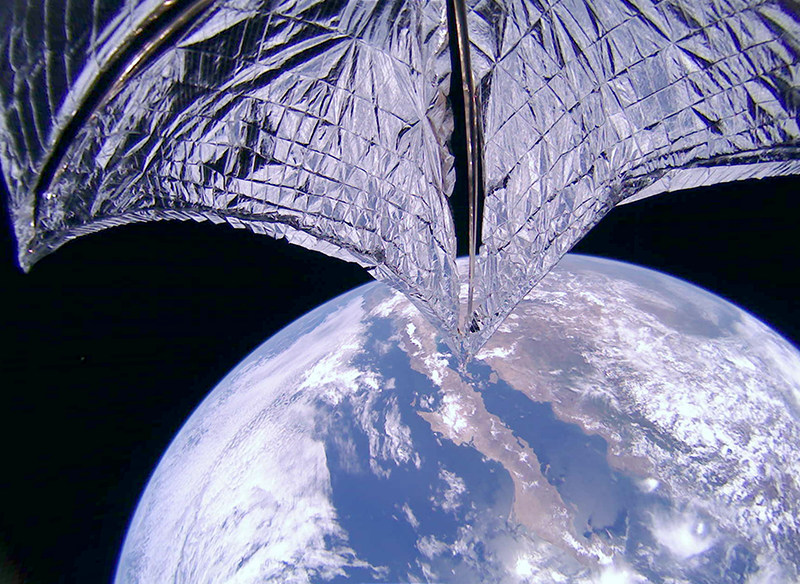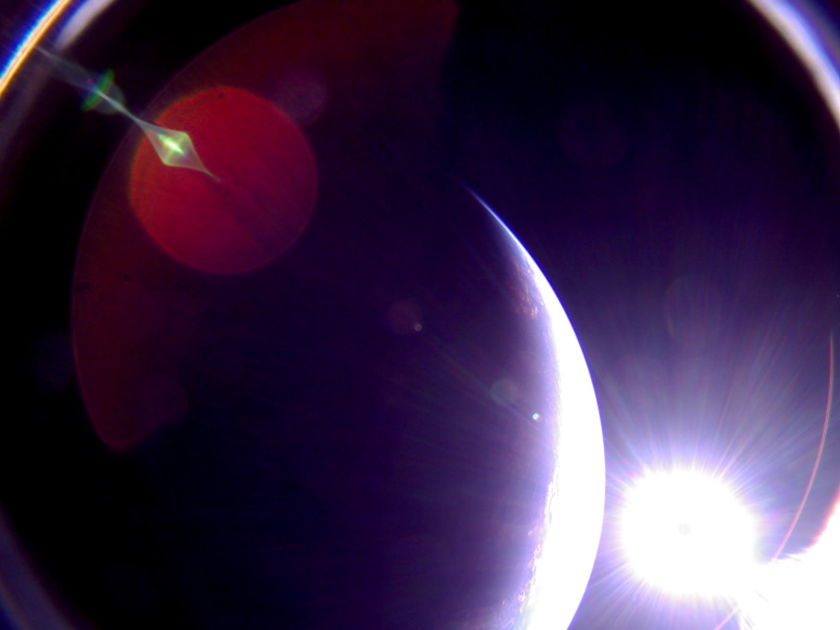Solar Sail Success! LightSail 2 Is Officially Soaring on Sunlight
Bill Nye thinks it's "romantic."

Today (July 31), The Planetary Society announced mission success as LightSail 2 — the bread-loaf-sized, crowdfunded, solar-powered spacecraft orbiting Earth — officially raised its orbit with the power of sunlight alone.
"Today, we declare mission success — we're going to a higher orbital altitude without rocket fuel, just with the push of sunlight," Planetary Society CEO Bill Nye said in a press conference.
We are officially declaring MISSION SUCCESS for our crowdfunded @exploreplanets #LightSail2 spacecraft! We did it people(s)! pic.twitter.com/vshsMTxHwLJuly 31, 2019
"This is a very exciting day for us and for me personally," Nye said in the conference. "This idea that you could fly a spacecraft and could get propulsion in space form nothing but photons, it's surprising, and for me, it's very romantic that you'd be sailing on sunbeams."
After LightSail 2 successfully deployed its solar sail last week, mission managers remotely optimized the craft's orientation. With these small changes, the craft began raising its orbit above our planet, raising its apogee, or orbital high point. Within the past four days, the craft has raised its apogee about 1.2 miles (2 kilometers). The mission team behind the craft confirmed that this orbital raising could be due to nothing other than successful solar sailing, or propulsion from photons, particles that transmit light, from the sun.
Related: LightSail Spacecraft Snaps Solar Sail Selfie in Space (Photo)

With this accomplishment, LightSail 2 becomes the first spacecraft to be propelled by solar sailing in Earth orbit; the first small spacecraft to be propelled by solar sailing; and the second-ever spacecraft, after Japan's IKAROS mission, to successfully use solar sailing, The Planetary Society said.
On June 25, LightSail 2 launched from NASA's Kennedy Space Center aboard a SpaceX Falcon Heavy rocket. On July 2, the 11-lb. (5 kilograms) cubesat signaled to Earth, marking the spacecraft's successful arrival in low Earth orbit. On July 23, the craft successfully deployed its solar sail and early data showed that its small motor was rotating and it had begun to turn the sail to the sun. That maneuver facilitates an extra "push" from the sun once per orbit. So far, the craft has captured and sent home images of its stellar view and solar sail deployment.
Get the Space.com Newsletter
Breaking space news, the latest updates on rocket launches, skywatching events and more!
LightSail 2 aims to prove the effectiveness of solar sails, which propel spacecraft using photons. While photons have no mass, they can still transfer a tiny bit of momentum. So, when photons hit a spacecraft, for example, the craft is pushed very slightly away from the sun. Photons hit us here on Earth as well, but we aren't affected by their force.
Solar sails, like the one deployed by LightSail 2, are flat, ultrathin, mirror-like sheets that push a spacecraft forward when hit with photons. The main benefit of using this technology is that a craft with a solar sail wouldn't need to carry fuel and so could theoretically travel for longer periods of time, as it wouldn't need to refuel.
With the success of this mission, The Planetary Society has demonstrated the capabilities of solar sailing with the LightSail 2 craft. The organization hopes that this success will support future solar sailing efforts. Because spacecraft using solar sails don't require fuel, these missions could theoretically help scientists to reach farther out into the cosmos.
With solar sailing technology, "we'd ferry cargo to Mars, look for signs of life and change the course of human history!" Nye said to Space.com in the conference. "This technology enables us to take things to extraordinary destinations in the solar system and maybe even beyond in a way that's never been possible before, because you don't need fuel and you don't need all the systems to control fuel and manage fuel and handle fuel and buy fuel," he said.
Those curious about the spacecraft's continued journey around Earth should check in at LightSail 2 Mission Control, a dashboard displaying up-to-date information about the craft. The site is updated every time LightSail 2 beams down to Earth, and those visiting the site can check out the craft's location, mission time, battery charge and the status of any new developments like solar sail deployment.
- Incredible Tech: How Interstellar Light-Propelled Sailing Works (Infographic)
- LightSail Spacecraft Snaps Solar Sail Selfie in Space (Photo)
- LightSail Solar Sail Ends Test Flight with Fall Back to Earth
Follow Chelsea Gohd on Twitter @chelsea_gohd. Follow us on Twitter @Spacedotcom and on Facebook.
Join our Space Forums to keep talking space on the latest missions, night sky and more! And if you have a news tip, correction or comment, let us know at: community@space.com.

Chelsea “Foxanne” Gohd joined Space.com in 2018 and is now a Senior Writer, writing about everything from climate change to planetary science and human spaceflight in both articles and on-camera in videos. With a degree in Public Health and biological sciences, Chelsea has written and worked for institutions including the American Museum of Natural History, Scientific American, Discover Magazine Blog, Astronomy Magazine and Live Science. When not writing, editing or filming something space-y, Chelsea "Foxanne" Gohd is writing music and performing as Foxanne, even launching a song to space in 2021 with Inspiration4. You can follow her on Twitter @chelsea_gohd and @foxannemusic.
